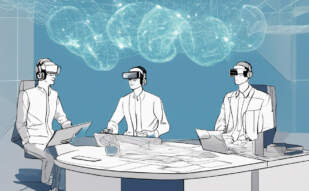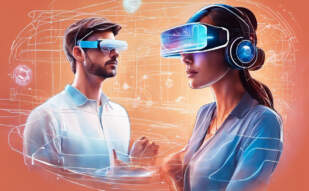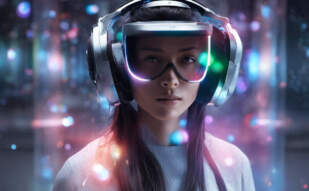- Harnessing The Power of AR in Web Design
- Deciphering the Jargon: AR, AR UI and AR UX Design
- Mastering The Three Modes of Web AR Interaction
- Applying the Interaction Modes: Best Practices
- Expanding The Scope Of Web AR Interactivity
- Realizing AR’s Potential in Redefining UI and UX for Web
- Integrating AR into UI and UX Design
- Charting The Next Frontier: Augmented Reality in Digital Marketing
- Future-Proofing Your Web AR Design: Performance and Optimization Strategies
Building responsive interfaces for Web AR involves harnessing the power of AR in web design, deciphering associated terminologies such as AR, AR UI and UX design, mastering the three modes of Web AR interaction, applying AR for enhanced UI and UX, integrating augmented reality into digital marketing strategies, and comprehensively future-proofing your Web AR design.

Thoroughly digesting this content empowers you with practical arsenals for creating super-responsive AR interfaces for web, while amplifying your understanding of the boon AR brings to web designs and optimizing AR interfaces for an enhanced user experience.
Harnessing The Power of AR in Web Design
Augmented reality (AR) has rapidly emerged as a transformative tool in web design, offering an immersive experience that dramatically enhances user interaction and engagement. By integrating AR elements into web design, we transition from the conventional approach of presenting static information, shifting into the realms of interactive and dynamic user experiences.
Exploring the quantifiable benefits of incorporating AR elements into web designs
Several data-driven studies have been conducted to quantify the influence of AR integration in web design. Notably, the presence of Augmented Reality interfaces has consistently shown to elevate site usage and user engagement metrics.
Consider, for instance, a highly researched source demonstrating how AR integration improves both user experience and engagement rates. This research provides significant insights into how the immersive nature of AR revitalizes the interface, transforming it into an actively engaging platform rather than a mere informational site.
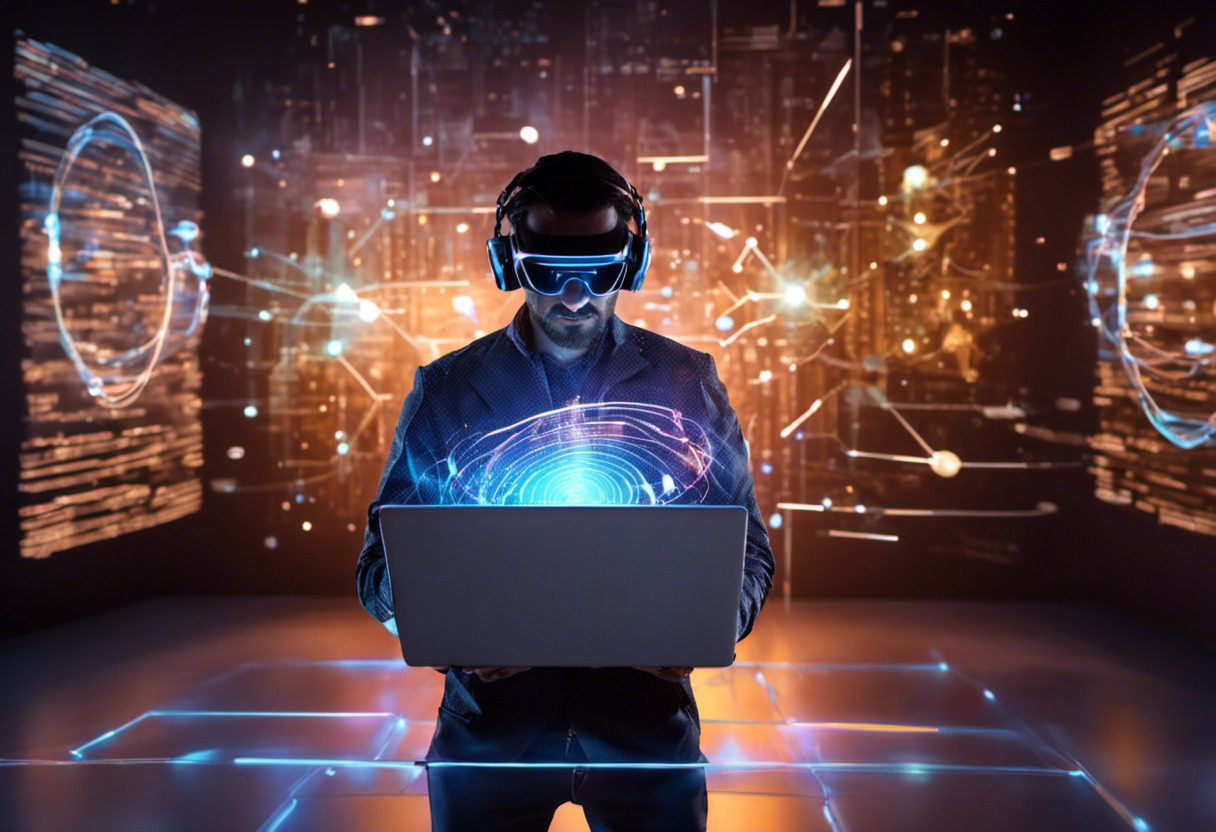
Data points from this study demonstrates several ways AR can supercharge your website:
- Enhanced user engagement: Users spend more time on AR-enhanced websites due to their interactive nature.
- Increased return visits: Websites offering AR experiences tend to have higher repeat visits, indicating ongoing engagement and better user retention.
- Improved conversion rates: AR can create a unique user experience that drives product understanding and trust, leading to increased conversion rates.
The underlying principle is simple: users are attracted to unique, engaging experiences. Adding AR to your web design provides precisely that.
Examples of Comprehensive AR Integration in Web Design
Several leading brands have successfully incorporated AR into web design, reaping substantial benefits in terms of user engagement and interaction. Ikea, for example, uses AR to allow visitors to see how furniture would look in their home environment, increasing engagement and boosting online sales. Instagram, utilizing AR filters, has also managed to create an engaging and exciting experience for their users.
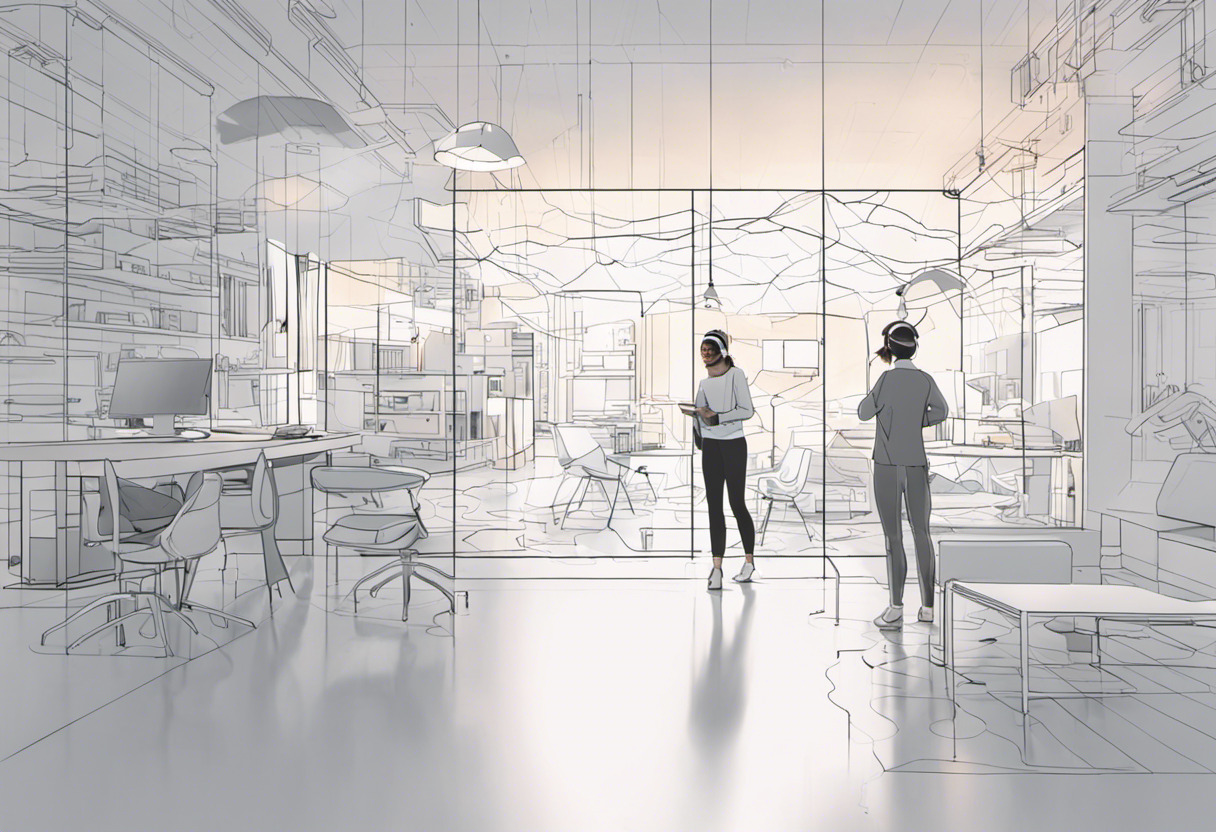
AR is no longer a niche technology; it is the next stage in web design evolution. Tap into its power today and explore how it can revamp interaction and engagement metrics on your website.
Deciphering the Jargon: AR, AR UI and AR UX Design
When we talk about creating responsive interfaces in the realm of web-based augmented reality (Web AR), three key terms consistently appear: AR, AR UI and AR UX design. Understanding these concepts is crucial to developing a seamless and intuitive user experience. Let’s take a moment to unravel these terms.
Understanding AR (Augmented Reality)
At its core, Augmented Reality or AR is a technology that superimposes computer-generated images onto our real-world environment. This mix of artificial and real-world visuals creates an enhanced version of reality that can improve user interaction and engagement. Consider Snapchat filters or the Pokemon Go app as prevalent examples.
Grasping the Concept of AR UI (Augmented Reality User Interface)
The User Interface (UI) is the space where interactions between the user and the system occur. When we talk about AR UI, we’re referring to the design and layout of digital elements that users directly interact with in an AR environment. For context, think Instagram filters, where users can choose various AR-enabled face filters. The button to switch between filters is a part of the AR UI.
Demystifying AR UX (Augmented Reality User Experience) Design
While UI refers to the tangible elements that a user can interact with, the User Experience (UX) in AR UX Design refers to the overall feel of the experience. It’s all about how the user feels when interacting with the system, including its usability, accessibility, and efficiency. Amazon’s “View in Your Room” feature is a prime example of AR UX Design, allowing users to view products in their space using AR.
How AR, AR UI, and AR UX Design Relate to Each Other
The three concepts of AR, AR UI, and AR UX design, while distinct, are intertwined in creating a comprehensive Web AR experience. Here’s how:
- AR is the overarching technology that enables the creation of computer-generated overlays on real-world visuals.
- The AR UI involves the design and layout of interactive elements within that AR space that users can manipulate or respond to.
- AR UX Design is concerned with the broader user experience, ensuring the AR and AR UI elements work together cohesively and intuitively to provide an enjoyable and smooth AR experience.
In essence, a well-balanced AR web interface should provide a harmonious blend of AR, AR UI, and AR UX design – one where the technology, interface, and experience don’t interfere with one another but rather complement each other seamlessly.
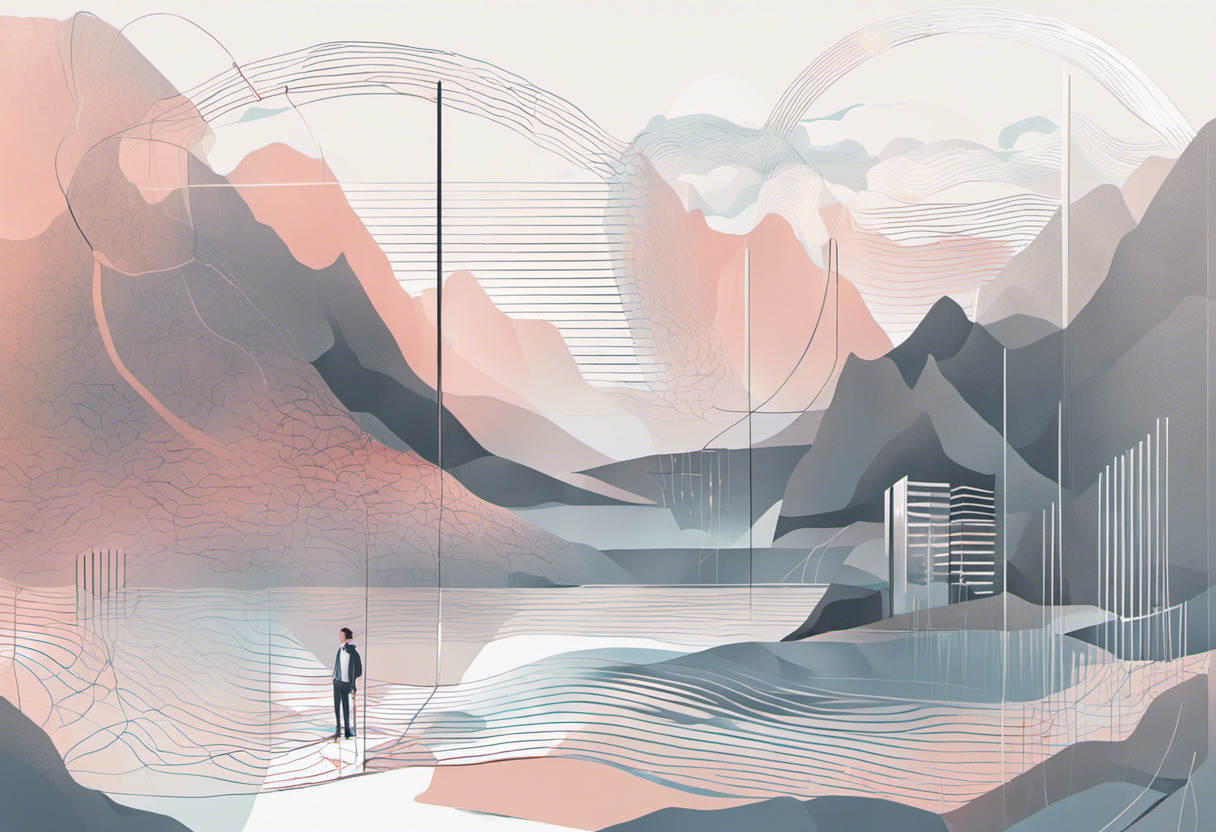
Takeaways
Grasping these concepts is like picking up the basic ‘toolbox’ required for anyone venturing into the creation of AR-based web experiences. With this understanding, web developers, AR enthusiasts, and UX/UI designers can proceed to build immersive and responsive web AR interfaces, with careful attention to both the visible UI and the overall user experience.
Remember, however impressive the underlying AR technology may be, it is just as crucial to carefully design the AR UI and thoughtfully craft the AR UX so that users find it not just appealing, but also intuitive and satisfying to use. That is the essence of creating an splendid and responsive web AR experience.
Mastering The Three Modes of Web AR Interaction
Web AR design proficiencies extended beyond basic understanding— they require mastery. A critical part of this mastery includes the skilled handling of the three primary modes of AR interaction— fixed to screen space, real world related, and object related. This section dives into a comprehensive treatise on each of these interaction modes, unpacking their individual nuances and delineating practical insights.

Fixed to Screen Space
The first mode of interactivity is tied to the device’s screen space. In conventional web design, elements stay on the screen even as the user scrolls or zooms. Fixed-to-screen-space mode is the AR equivalent of this. It ensures AR elements stay in a specific place on your device’s screen, regardless of real-life movements.
For instance, Instagram’s AR filters are an application of fixed-to-screen-space mode, where the AR components remain in place irrespective of the user’s movements.

Real-World-Related Interactivity
How does an AR application react to physical movements of the user in the real world? The answer to this question brings us to the second modality— real-world-related interactivity. In this case, AR overlays convincingly interact with our physical environment, offering users a seamless blend of digital and real-world experiences.
L’Oreal’s AR makeup try-on feature—a popular tool on their website—is a prime example of real-world-related interactivity. When users move their head, the AR makeup elements move correspondingly, giving a realistic impression of wearing the makeup.
Object-Related Interaction
The third mode of AR interaction is object-related, which links digital information to specific real-world objects. The goal here is to forge a relationship between AR elements and physical artifacts, engendering a host of interactive possibilities.
An excellent case in point is the IKEA Place app, which allows users to preview furniture in their own homes by projecting three-dimensional models of IKEA products onto the live camera feed. This type of AR interaction allows users to manipulate the position and orientation of the virtual furniture, offering a lifelike shopping experience.
Applying the Interaction Modes: Best Practices
Now that we have familiarized ourselves with the three modes of web AR interaction, how can we effectively apply them? Here are some recommendations:
- Consider the application:The use-case dictates what interaction mode will be the most effective. Is the goal to offer a static screen-bound experience or a dynamic interplay with the physical world? Will the application interact with specific physical objects? Answering these questions can point you to the most appropriate interaction mode.
- Think about user comfort:Constant interaction with AR elements can be fatiguing. Ensure the design balances user engagement with usability to prevent user discomfort.
- Optimize for mobile:Design your AR experience keeping in mind the restrictions of mobile devices, such as smaller screen size and limited processing power. Prioritizing mobile optimization is key for a successful AR experience.
For a detailed narrative on the best practices in using AR for mobile web storytelling, glean more insights from this article The Art and Science of Weaving AR into Mobile Web Storytelling.
Expanding The Scope Of Web AR Interactivity
Understanding and applying the three modes of Web AR interaction are essential steps toward building hyper-responsive augmented reality interfaces. By adapting design strategies to the specific interaction modes, web AR can offer immersive, engaging, and innovative user experiences. It’s indeed a powerful tool in the hands of today’s web designers, one that will redefine the future of web interactivity.
Realizing AR’s Potential in Redefining UI and UX for Web
Web design is witnessing an evolution, driven by the integration of augmented reality (AR). Web AR has opened up previously untapped playgrounds, specifically in context with user interface (UI) and user experience (UX) design. Let’s delve into understanding how implementing AR is fostering a revolution that enhances UI and UX.
AR’s Role in Uplifting User Interface
One of the sublime aspects of AR is how it can augment and enrich the UI of popular websites. A prominent example is IKEA’s AR web application. This particular technology integrates AR into their interface allowing users to ‘place’ furniture in their space.
Not only does this revamp the interface, but it also provides practical value by helping users visualize furniture in their specific environment. The consequence – a more involved user interaction that’s both engaging and useful.
- Interactive elements: In the face of AR, hyperlinks and buttons evolve into much more intuitive equivalents. This keeps the user invested and captivated.
- Dynamic info presentation: Information now can be presented in 3D, well-aligned with the user’s real world, making it much more understandable and engaging.
Indeed, AR holds the capacity to transform the web interface into something much more immersive and responsive.
Revamping UX With AR Techniques
AR isn’t only changing UI but is causing ripples in user experience as well. How, you ask?
| Traditional UX Techniques | Application of AR |
|---|---|
| Linear user flows. | Non-linear, adaptive flow adjusted based on user input during the AR experience. |
| 2D Information display. | A richer, 3D presentation that’s in sync with the user’s environment. |
| Predetermined content delivery. | Adaptive content delivery based on user’s AR inputs. |
For instance, the Sephora Virtual Artist AR-based application leverages AR for product visualization, providing a uniquely immersive experience. Users can instantly try on different types of makeups virtually, eliminating the trial-and-error process generally associated with makeup shopping. This design innovation enables an engaging and personalized user experience.
Integrating AR into UI and UX Design
To harness AR’s potential in enhancing UI and UX design, it’s important to integrate it effectively within your web design strategy. Embodying AR centric approach requires thoughtful planning and meticulous execution.
- Analyze user needs in AR context: The ultimate aim is to make the user’s interaction more wholesome and rewarding.
- AR-orientated design: Plan your design keeping in mind the AR experience. For instance, design elements should be interactive and information should be able to transform in three dimensions.
- Testing and Optimization: Continual testing and optimization forms a key component for any AR integrated design, to ensure smooth and opt performance.
Building a responsive web AR interface doesn’t happen overnight, but with the right technique and persistence, you can create an immersive experience that captivates your audience.
Charting The Next Frontier: Augmented Reality in Digital Marketing
A new wave of marketing strategy is upon us, and it’s revolutionizing the way we approach user engagement. With the advent of augmented reality (AR), we’re now entering an era where businesses are leveling up their digital marketing strategies to cater for engaging and hyper-responsive user interaction.
Transforming the Digital Marketing Landscape
With numerous emerging technologies, AR stands out in terms of user engagement and interaction. To comprehend AR’s ever-increasing relevance in digital marketing, we’ll delve into statistical trends and real-world examples.
According to recent studies, AR is set to reach more than 2.9 billion users by 2023. This prediction, based on current adoption rates, demonstrates a significant growth opportunity for digital marketers to immerse users in their brand.
Take the case of Ikea, for example. They integrated AR into their marketing strategy, allowing customers to preview furniture in their homes using a smartphone. Read more about successful AR Integration instances here.
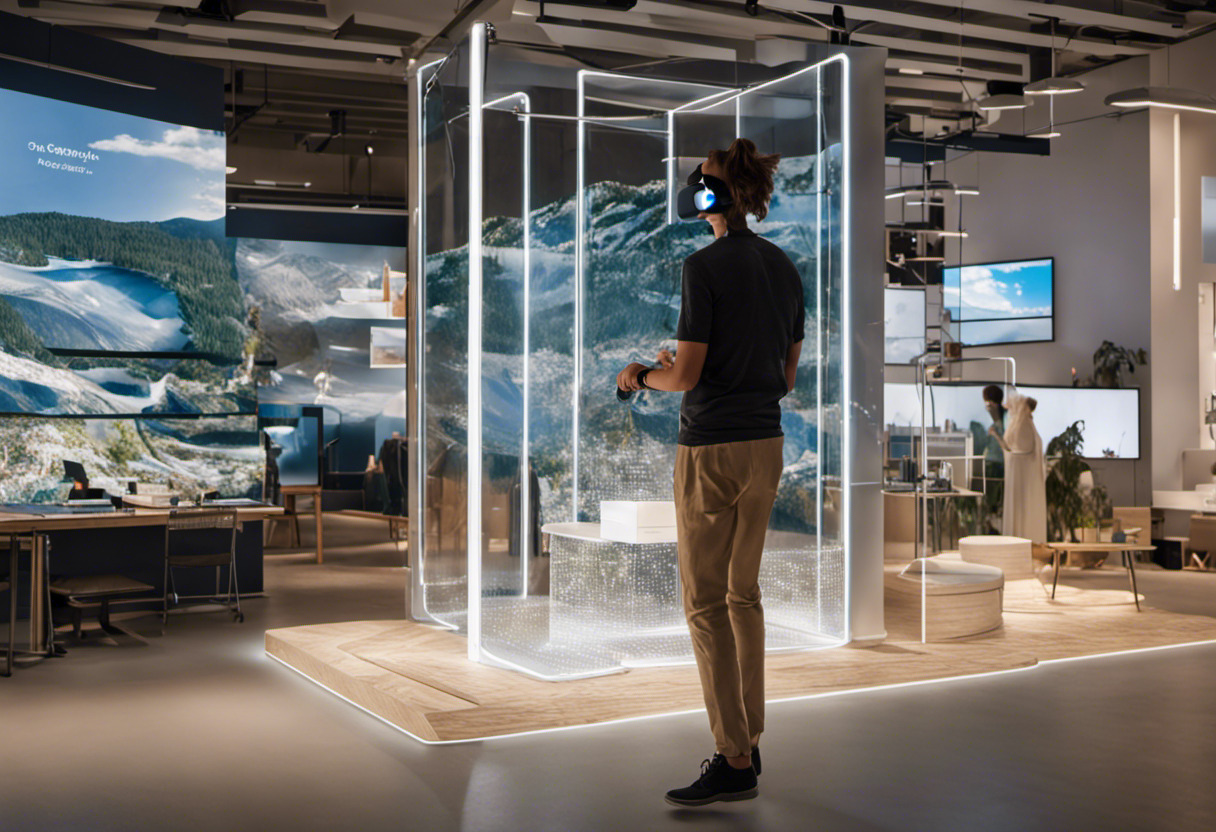
AR’s Influence on User Engagement and Click-through Rates
In the digital space, user engagement and click-through rates (CTR) are vital metrics for success. AR, with its combination of real and digital elements, brings a novel dimension to engagement.
- Enhanced Interactions: AR creates deeply immersive experiences, fostering enhanced interaction with digital content. L’Oréal Paris applied AR technology for a virtual makeup tester, leading to a 49% conversion rate boost.
- Innovative Display of Information: Businesses can leverage AR to exhibit products or services innovatively, improving decision-making and impacting CTR positively. Retailer Converse launched an AR app that let users virtually try shoes before purchase, resulting in a 32% increase in CTR.
- Better Engagement: Due to its interactive nature, AR encourages users’ active participation in the marketing process, fostering more profound connections with brands. Heinz boosted customer interactions by up to 12 minutes per session through their AR-driven campaigns.
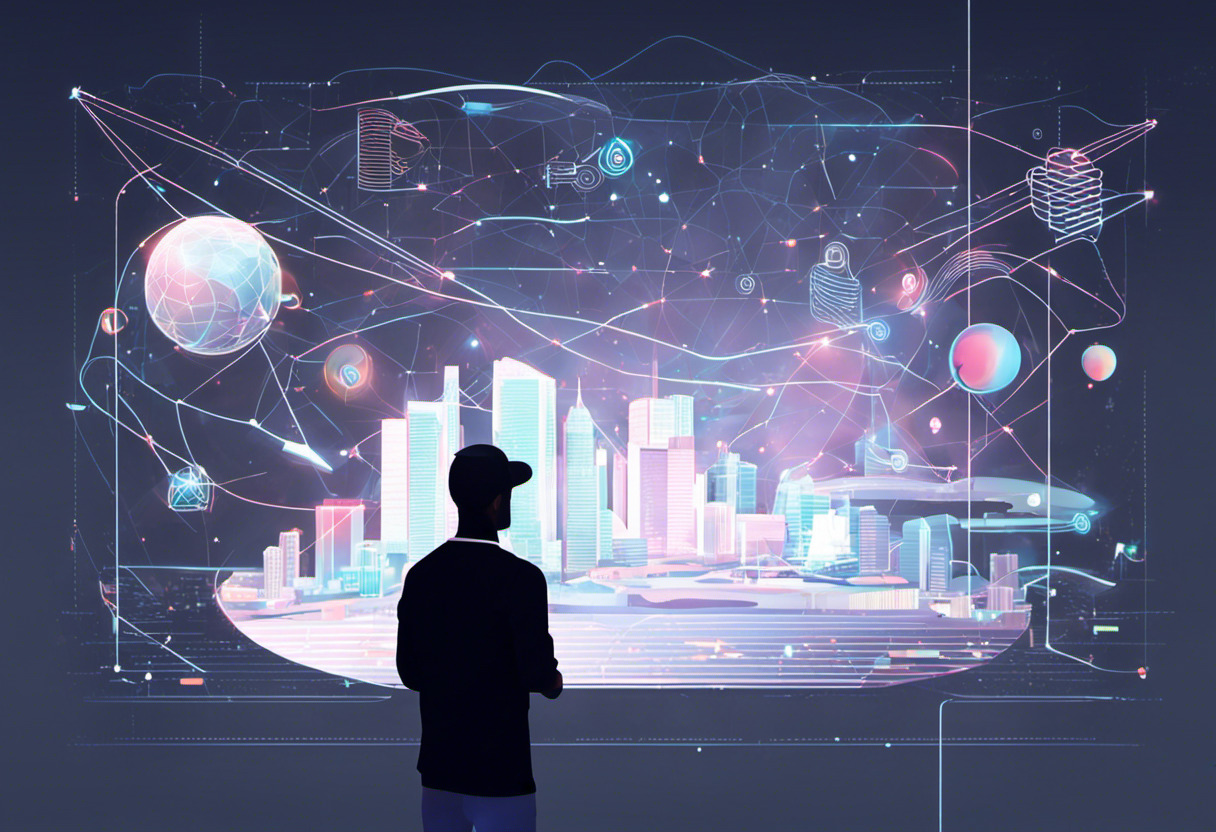
Embracing AR in Your Digital Marketing Strategy
Given AR’s immense potential to drive engagement, it’s prudent for businesses to integrate this technology into their digital marketing strategies. Here are some optimal ways to leverage AR in digital marketing:
- Product Visualization: AR can be used to provide clear, immersive views of products, enhancing consumer understanding and trust.
- Interactive Advertisements: AR can facilitate the creation of interactive ads that allow users to engage extensively with a brand or product.
- Personalized Experiences: Using AR, businesses can offer personalized experiences, fostering brand loyalty and customer retention.
Thus, AR can be a powerful tool in creating compelling, responsive, and engaging digital marketing strategies.
Future-Proofing Your Web AR Design: Performance and Optimization Strategies
Web AR design is a constant evolution. To remain competitive, it’s crucial to not only implement innovative enhancements, but also to keep an eye on the key performance indicators that ensure responsiveness and usability.
Technical Aspects Critical to Web AR Performance
Crucial backstage elements such as polygon count optimization, material compression, and load time management, although invisible to the user, are vital to the overall AR experience.
Polygon count optimization, for instance, requires the developer to maintain simplicity in design. High polygon count often results in slower load times, thereby hampering the user experience. For an illustrative example, consider the Amazon AR view feature. Despite featuring a plethora of products in AR, Amazon ensures its 3D models are simple and less polygon-dense so as not to impact load times unfavorably.
- Image compression: AR applications often involve large volumes of visual content. Compressing images without losing their quality can significantly speed up load time. Google’s very own WebP image format serves as a prime example, which provides superior lossless and lossy compression for images on the web.
- Material compression: In AR, materials include things like textures and shaders. Just like image compression, material compression also helps reduce load time.
- Polygon count optimization: Lowering the number of polygons in 3D models can reduce the time it takes to load and render them.
Proactive Strategies for Optimizing AR-Centric Web Design
Optimization strategies play a significant role in ensuring the seamless functionality of your Web AR design. Let’s explore a number of these strategies:
- Preload critical assets: By preloading critical assets, your browser already has the necessary content at its disposal, hence reducing load time.
- Cache liberally: Caching assets can significantly speed up a returning user’s experience as the browser doesn’t need to reload every asset.
- Use hardware acceleration: Hardware acceleration when available can help offload some of the rendering tasks and consequently speed up the AR experience.
The comprehensive guide on web AR performance and optimization techniques offers even more insight into how these processes work and the impact they can have on your Web AR design’s overall functionality and user experience.
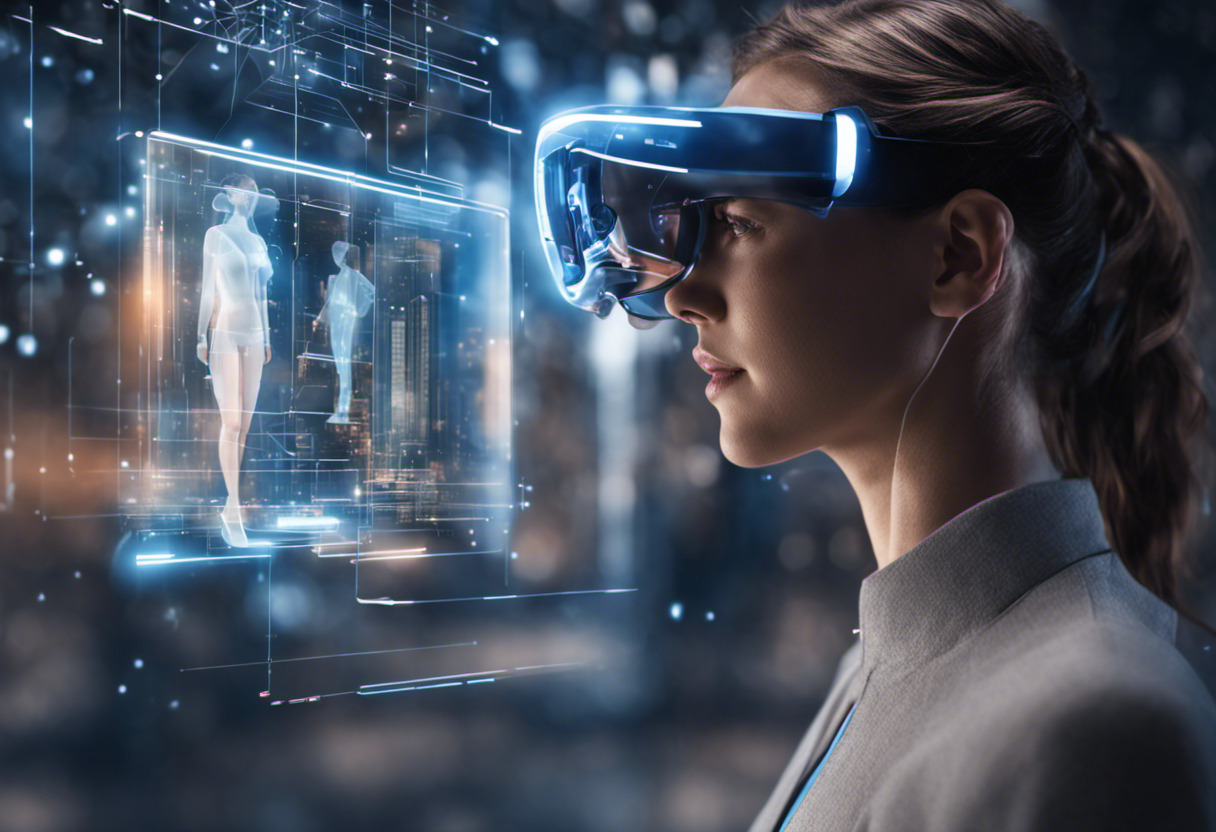
Testing and Validation: Getting Your Web AR Performance Right
Once you’ve implemented your designs and optimization strategies, thorough testing is paramount. Varied devices, operating systems, and internet speed scenarios will emulate different user situations, thereby assuring that your web AR interface remains responsive across myriad user scenarios.
Companies like Apple and Google, for instance, invest extensively in testing and validation, enabling consumers worldwide with different device specifications to enjoy a consistent AR experience.
Through this section, we’ve established that the usability and responsiveness of your web AR interface heavily rely on its performance optimization strategies. Rigorous testing and validation, along with consideration for technical aspects like image and material compression and polygon count optimization, are vital to ensure a smooth and enjoyable AR experience for users.
Logan Bellbrook
Content writer @ Aircada with a knack for nature & AR/VR/XR. Blogging the intersection of tech & terrain.



